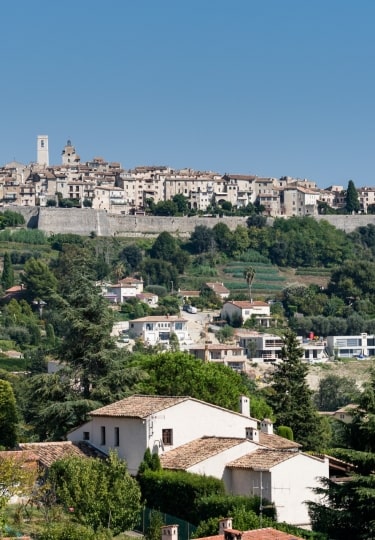Walled cities were originally built to deter would-be invaders from gaining entrance. These sturdy ramparts were designed to protect the lives of the populace, and the noble classes, who resided within the confines of the defensive battlements.
These days, many walled cities in France remain, some more or less fully intact, others in a state of ruin, all with stories concealed within those ancient stones.
So, leave your siege engines at home, and simply stroll into one of these majestic fortified towns during your next trip to France. Chances are a shower of arrows won’t rain down upon your head from the stone walls—unless, of course, you forget to pay your bistro or café bill.
Avignon, Provence
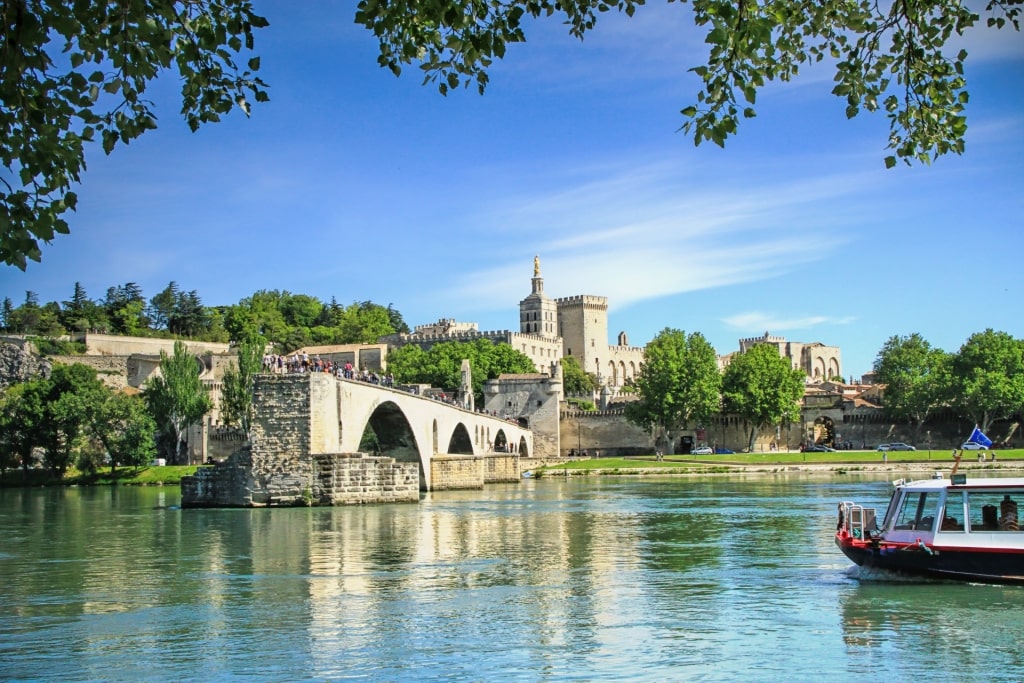
Avignon, Provence
Avignon is home to Palais des Papes, or the Popes’ Palace, a famous historical site in France. It is a must for any history buff interested in the Avignon papacy, or the Great Papal Schism that rocked Catholicism in the late 1300s.
The Old Town in Avignon, located on the south bank of the Rhône River in Provence, is a superb example of a walled French city that has withstood the elements since these shielding walls were first built, centuries past.
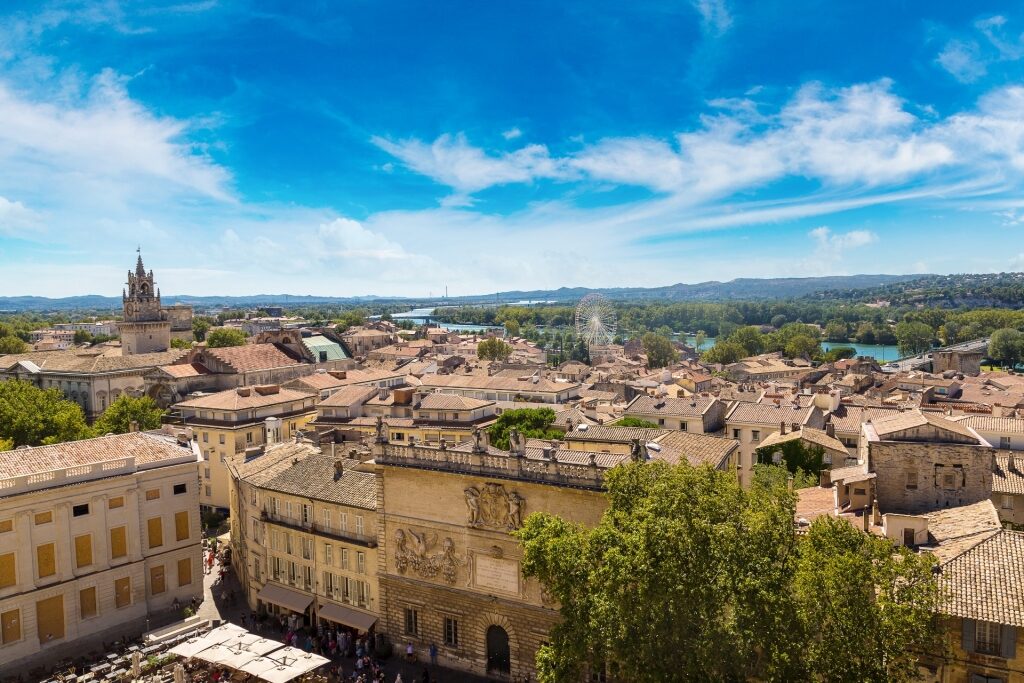
Old Town of Avignon, Provence
Avignon’s city fortifications, constructed during the 13th and 14th centuries, surround the medieval Old Town (a UNESCO World Heritage Site) and the Palace of the Popes. Historians believe the city has had some type of battlement since the Roman era, dating back to the 1st century, although those ramparts no longer exist.
Today, you can explore more than two and a half miles of city walls, with numerous gates (some original, some added at a later date, some rebuilt during the 19th and 20th centuries).
While you’re inside the center, a visit to the Palais des Papes, and the Papal apartments, once the abode of the popes, should rate high on your list of things to do as well.

Pont Saint-Bénézet in Avignon, Provence
Other highlights include walking out onto Avignon Bridge, or the Pont Saint-Bénézet, which extends out into the Rhône River. Only four of the bridge’s wide arches remain; the remaining arches have either decayed or been washed away with time.
Once you’re inside the city walls, you can call upon the seventh-century Gothic Église Saint-Agricole church, or else relax in a café with a warm drink in hand in the picturesque Place de l’Horloge, Avignon’s main square, where you can gaze upon the Opéra d’Avignon, which has been putting on performances since 1835.
Laon, near Paris
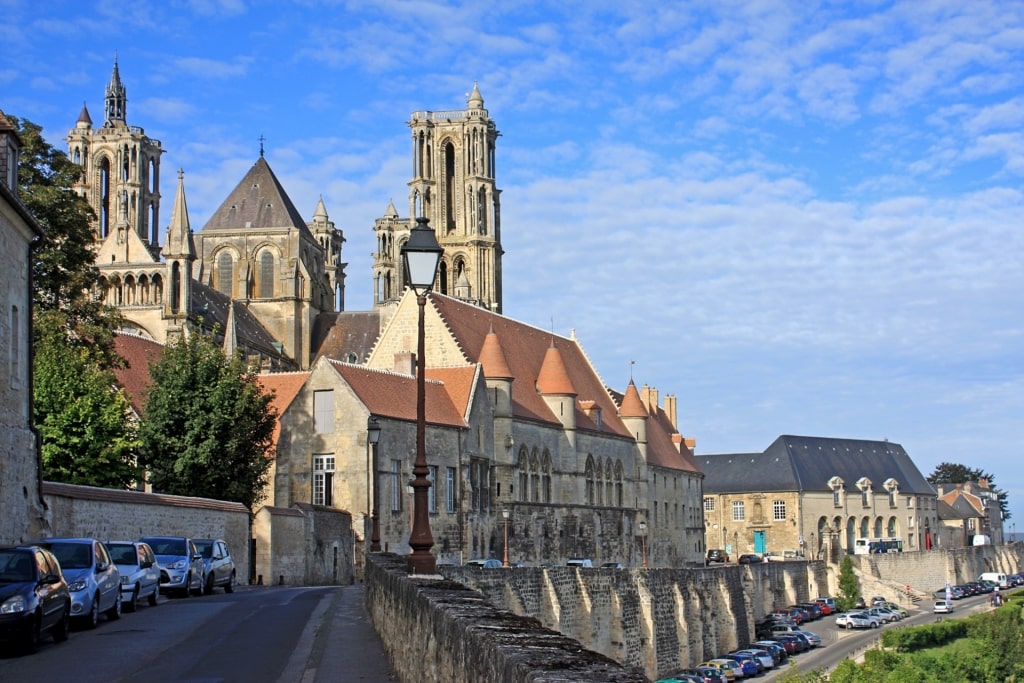
Laon, near Paris
When it comes to walled cities in France, Laon, about an hour and a half by train from the Gare du Nord station in Paris, is a sublime spot. Situated atop a rocky limestone hill, you can steep yourself in the region’s historic culture here.
The fortified Old Town here offers brilliant views across Picardy’s pretty countryside and the “lower” town (not afforded walled protection) in the Hauts-de-France region of France.
You’ll also encounter the sturdy-looking village ramparts, plus lots of medieval architecture, like the 12th-century gothic cathedral Notre-Dame of Laon, with a towering nave.
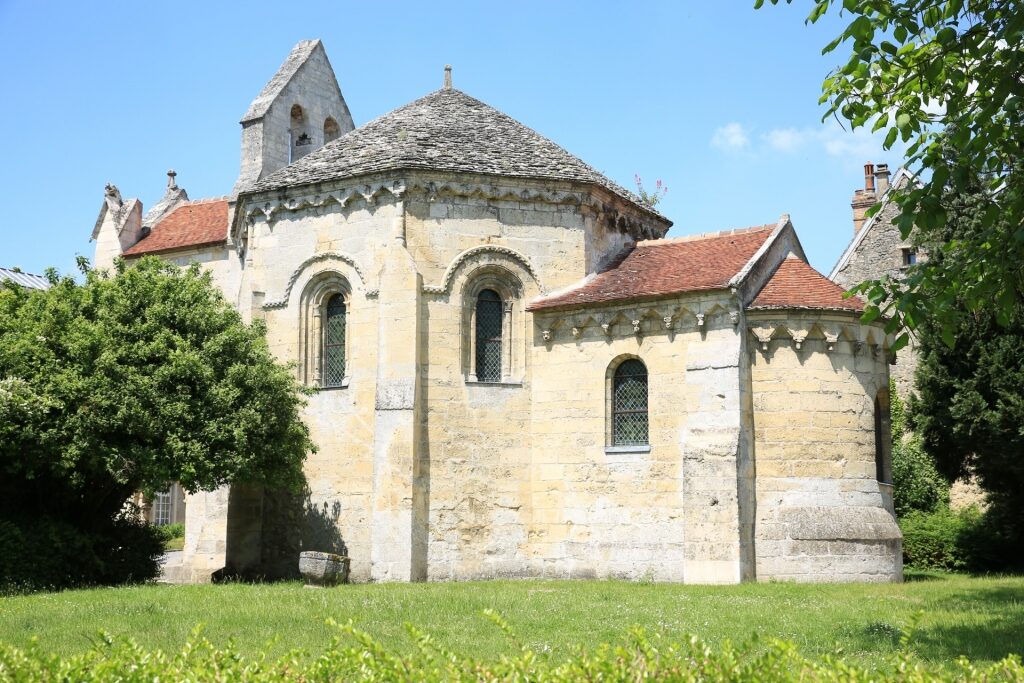
Chapel of the Templars of Laon, Laon
If you’ve come for the bulwarks, you’re in luck, as you can walk the length of the ramparts, which run for over four miles. There are plenty of cobblestone streets for you to wander down, too. During your rambles, you’ll also come across the Romanesque Chapel of the Templars of Laon, built during the 12th century, which rests inside the city’s museum gardens.
If you have time, try to visit the subterranean tunnel system here. The souterrains de Laon are underground passageways carved into the city’s limestone. Many tunnels now feature multimedia history displays, which you can enjoy while you explore.
Brouage, near La Rochelle
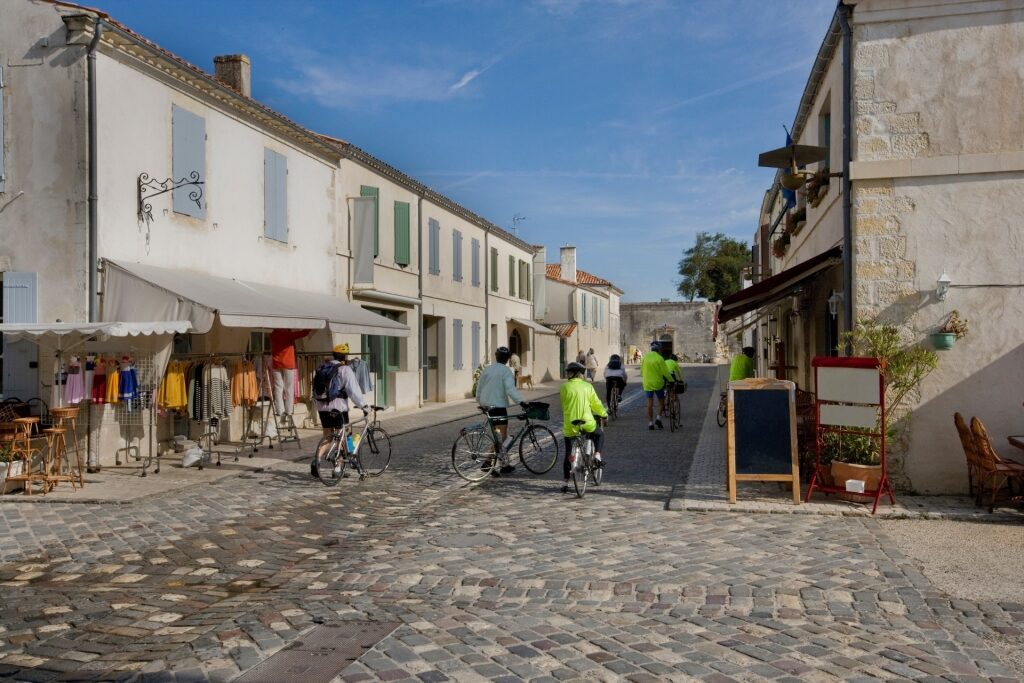
Brouage, near La Rochelle
South of La Rochelle, along France’s west coast and the Bay of Biscay, you’ll encounter the once well-defended city of Brouage, located in the Charente-Maritime department. Brouage, and its marshy setting, have seen their fair share of turbulent history over the centuries.
During the French Wars of Religion, when Catholics and Protestants were at each other’s throats, massive ramparts were built here to protect the merchants and inhabitants living inside from attack. The star-shaped walls, erected in the 1600s and garrisoned with soldiers, served as a powerful tool meant to dissuade potential assaulters.
This former naval port was also an important hub for trading salt. Oysters are a big deal here as well, thanks to the Marennes-Oléron oyster beds nearby.
In its modern incarnation, Brouage, along with the bucolic landscape surrounding the town, is considered by many to be one of the plus beaux villages de France, or the most beautiful villages in France.
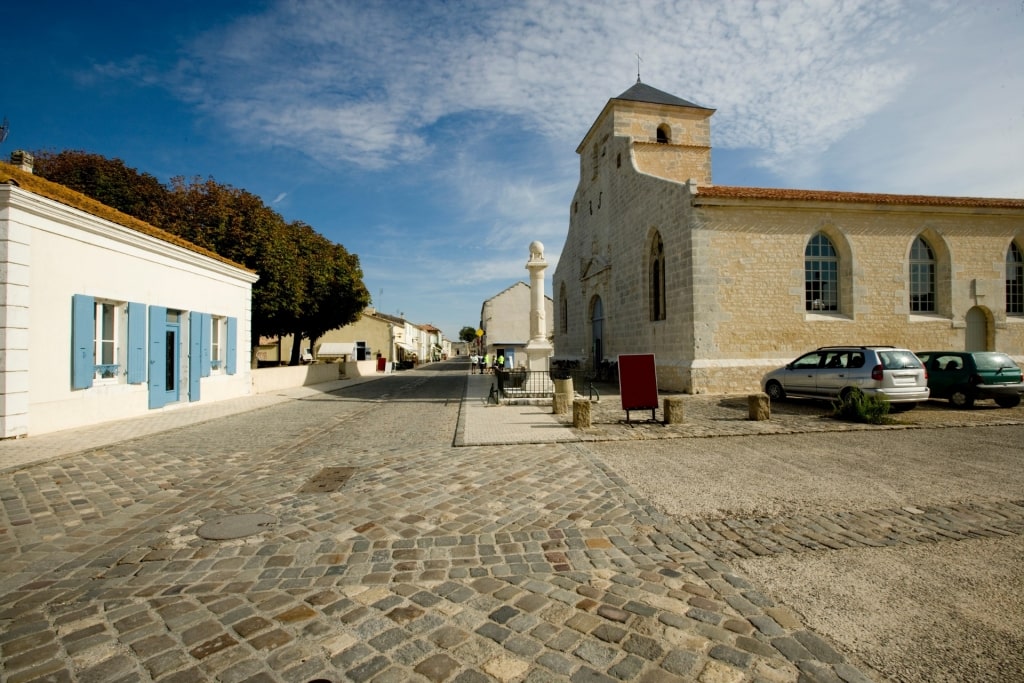
Church of Saint-Pierre de Brouage
Besides strolling along the city walls, which offer stellar views of the lovely countryside, you can stop by the 17th-century church of Saint-Pierre de Brouage, with a nave that’s shaped somewhat like a ship’s hull.
The small streets in Brouage are full of flowers, as well as some artsy boutiques, cozy cafés, and friendly bistros. Nature trails just outside the town will afford you some amazing marshland bird-watching opportunities; you can spot aquatic warblers, bluethroats, herons, and many other bird species once you get out into the open.
Aigues-Mortes, near Marseille
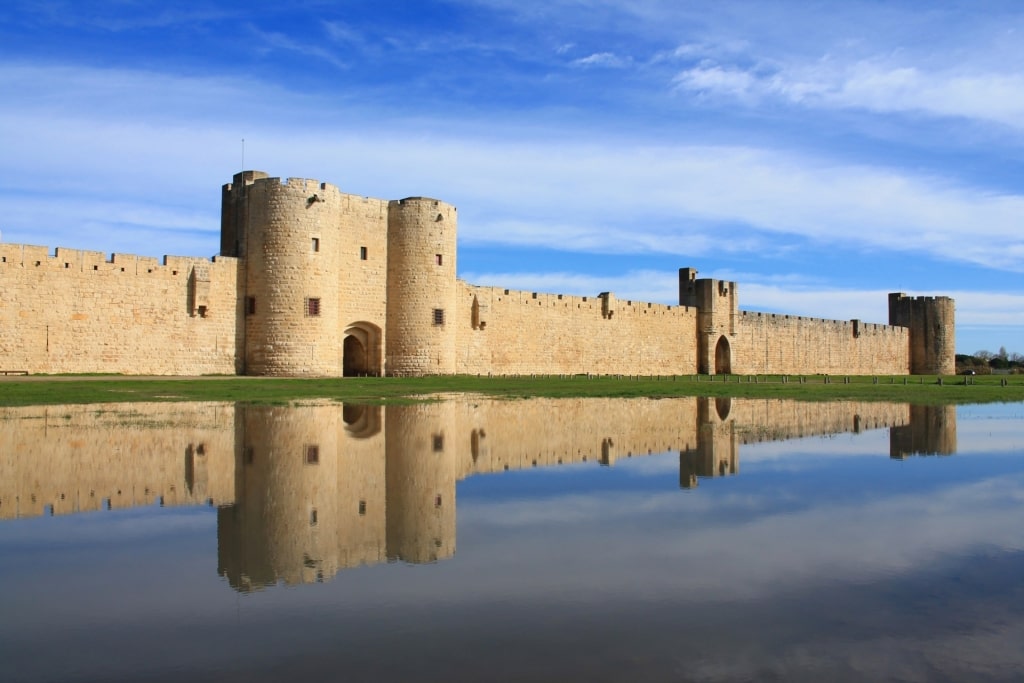
Aigues-Mortes, near Marseille
In the department of Gard, in the marshy countryside west of Marseille, you’ll find Aigues-Mortes, an impressive walled city. Another bonus of heading to Aigues-Mortes is that you’ll be at the doorstep of the protected La Camargue delta region wetlands, a verdant landscape full of biodiversity.
Aigues-Mortes, once an important inland port, is situated next to the Canal du Rhône à Sète. The city, fortified in the 13th century by King Louis IX, features ramparts just under a mile in length.
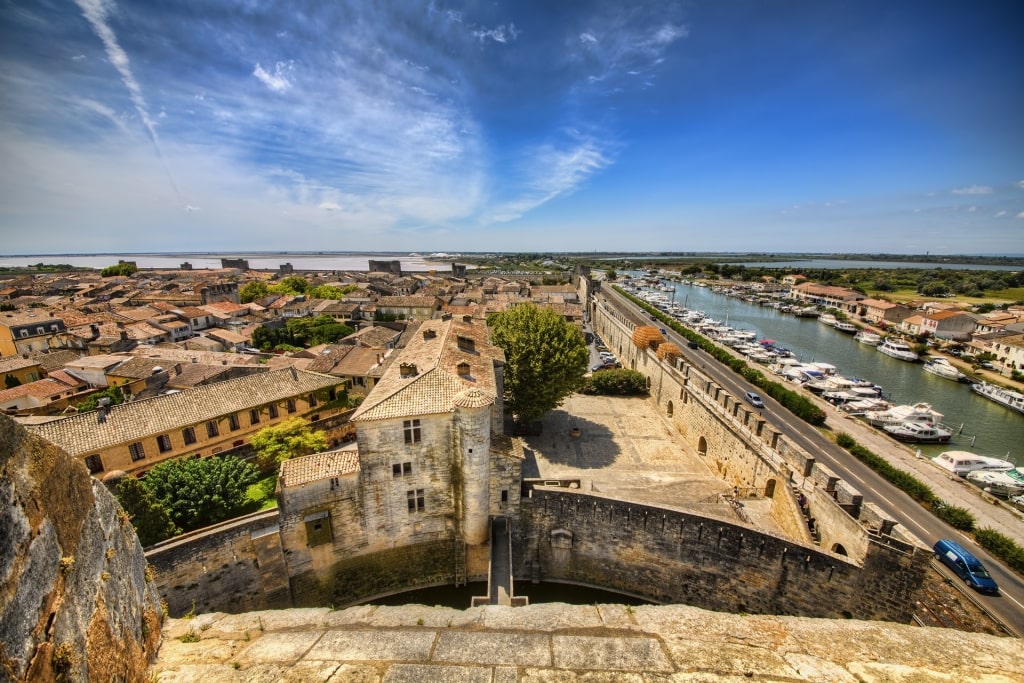
View of Aigues-Mortes from Constance Tower
Budget an hour or so to walk the length of the city walls. Other high points include the 136 stairs leading up to the top of Constance Tower, which served as a prison in the past.
A slog up to the top of Constance Tower will reward you with impressive views of the city walls, canal, and flat landscapes surrounding Aigues-Mortes.
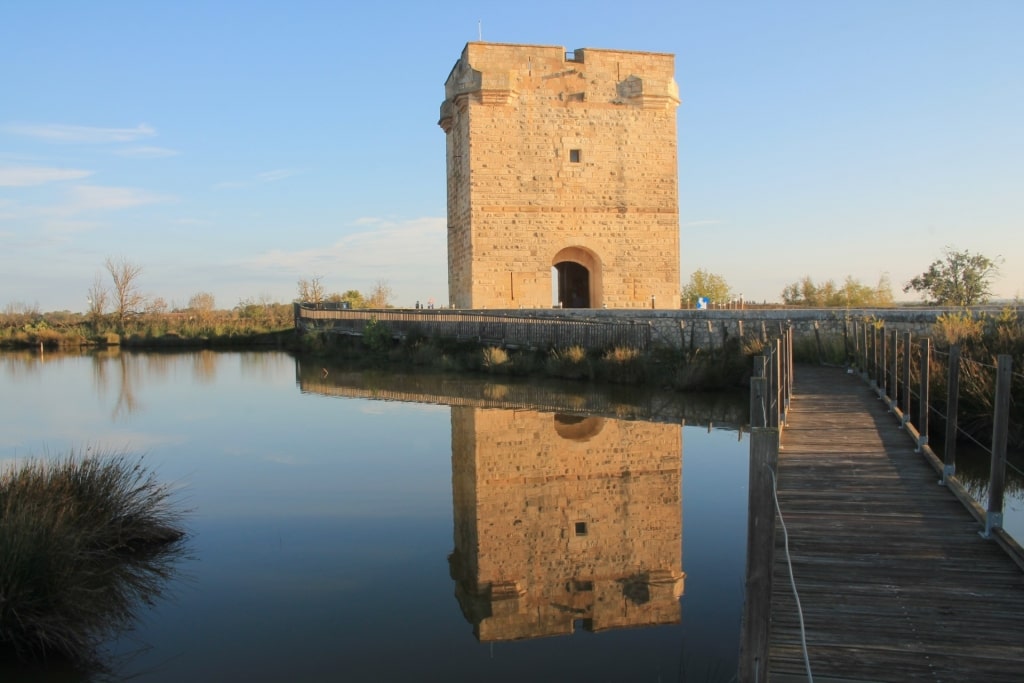
Carbonniere Tower
While roaming the ramparts, you’ll pass by different gates and defensive towers. You can also visit the isolated Carbonniere Tower, outside the walls. These days, the Carbonniere Tower looks rather lonely out there; the only job it has left is to “defend” a relatively empty salty marshland.
The Notre-Dame-des-Sablons d’Aigues-Mortes Gothic church, along with its handsome stained-glass windows, makes for an enjoyable stop as well while you investigate this ancient city’s café-laden cobblestone lanes.
Provins, Île-de-France

Provins, Île-de-France
Southwest of Paris, in the region of Île-de-France, you’ll be treated to some thick and imposing ramparts in the town of Provins, a UNESCO World Heritage Site famed for its towering medieval walls, 82 feet high. You’ll also find miles of underground tunnels here, and interestingly enough, some delicious cheese.
In its heyday, Provins was a fortified medieval fair town ruled over by the Counts of Champagne. Today, you can visit the hilltop César Tower, a former dungeon, which will afford you splendid views over the village.

Provins, Île-de-France
Exploring the Old Town here, with its historical architecture, pleasant cafés, and the striking Saint Quiriace Collegiate Church, can take up the better part of a day. The Catholic Église Collégiale Saint-Quiriace, built in the 12th century, is hard to miss, thanks to its massive 17th-century dome, which dominates the skyline.
This fair town also features an eye-catching rose garden, with hundreds of different rose varieties, a small tourist train (in case your feet get tired), falconry shows, plus lively reenactments of medieval jousting tournaments.

Brie de Provins Photo by Myrabella on Wikimedia Commons, licensed under CC BY-SA 3.0
Oh, and don’t forget the cheese. Provins is home to Brie de Provins. If you’re a cheese enthusiast, swing by a local fromagerie and try some of this soft, raw milk cheese, or perhaps pair your brie with a glass of wine, or take some away to snack on later.
Saint-Paul-de-Vence, Alpes-Maritimes
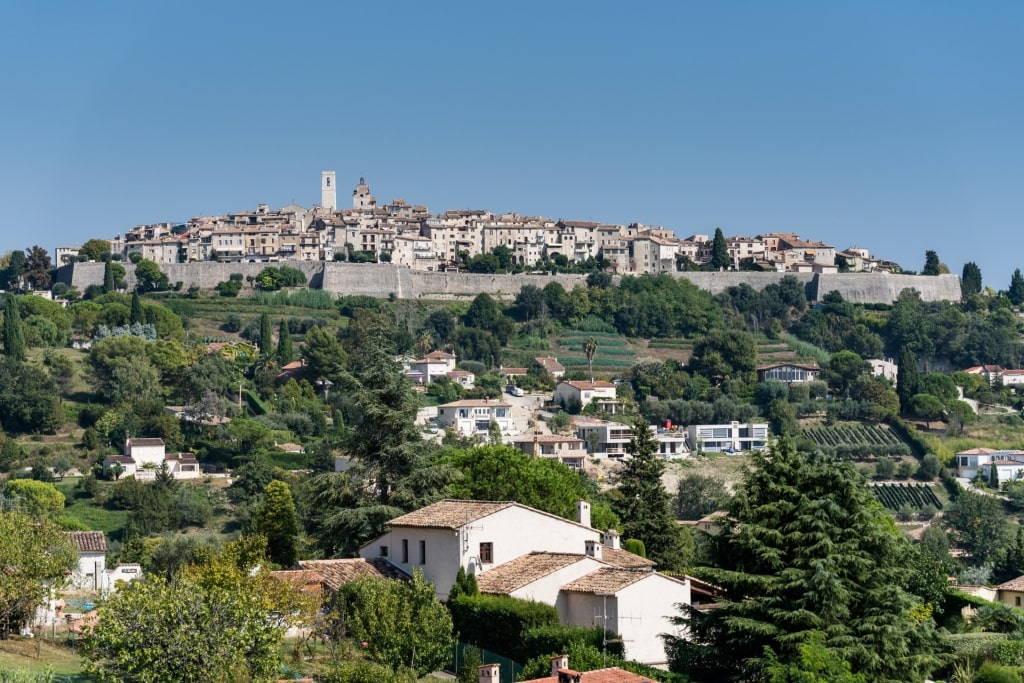
Saint-Paul-de-Vence, Alpes-Maritimes
About half an hour or so from Nice by car, you’ll discover one of the comeliest walled cities in France. This town officially goes by the name of Saint-Paul-de-Vence, although lots of folks simply call it Saint Paul.
The remarkably arty Saint-Paul-de-Vence’s defensive walls were built by the King of France, Francis I Valois, during the late 1530s.
This small French town sits atop a rocky, oval-shaped hill, which offered residents protection from attacks in the past. The hilltop setting also offers incredible views of the Mediterranean Sea.
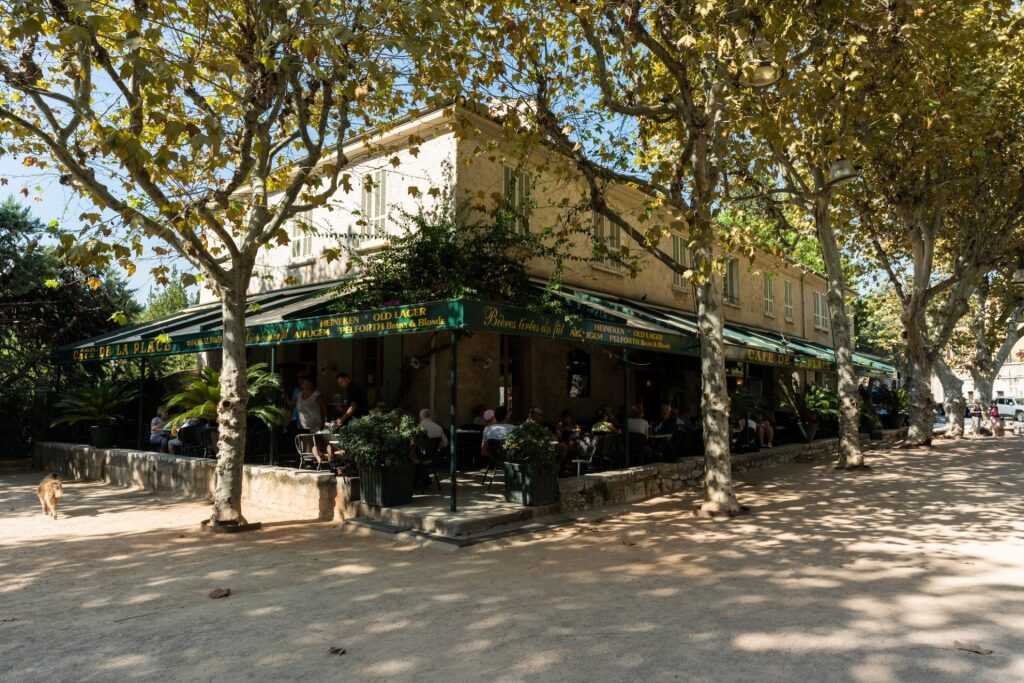
Saint-Paul-de-Vence, Alpes-Maritimes
Perhaps the most enjoyable thing you can do here is to wander around the zigzag alleys and small streets, as well as the Rue Grande, and take in the town’s overall ambiance, art galleries, and cute cafés.
The small but very charming Place de la Grande Fontaine, once a central meeting square, is perfect for photography, as well.
During the 1930s and 40s, Saint-Paul-de-Vence became something of an artistic enclave, with well-known French filmmakers like Jacques Prévert and Georges Clouzot taking up residence here.
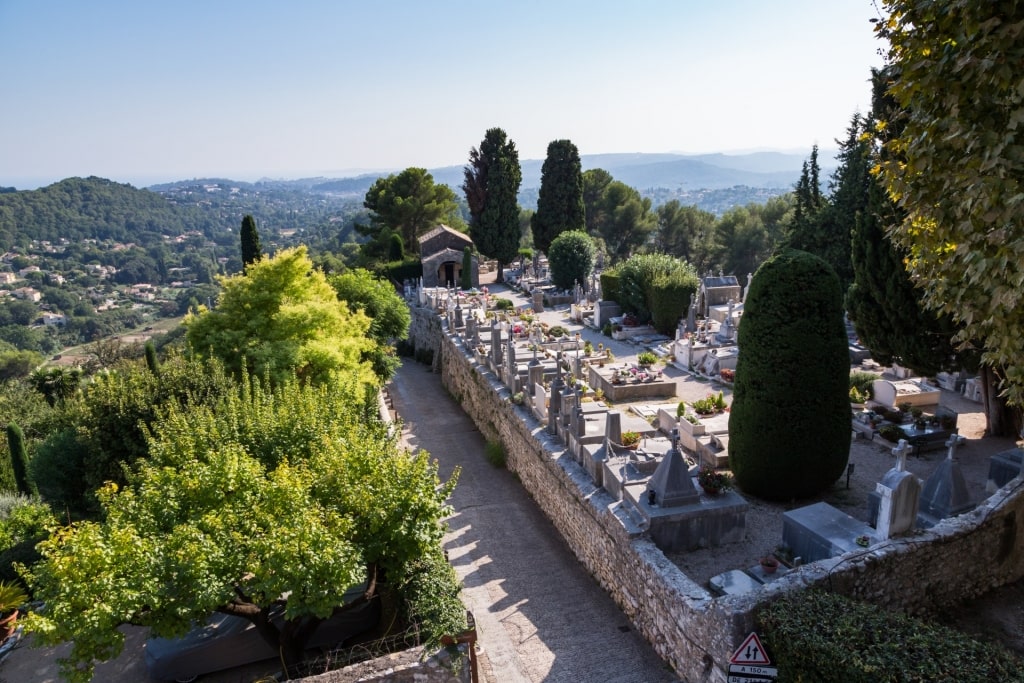
Cemetery of Saint-Paul-de-Vence, Alpes-Maritimes
Over the years, other artists, like Fernand Léger, Henri Matisse, Pablo Picasso, and the American writer James Baldwin spent time or lived in this fortified village.
If you wander to the town’s cemetery, you can pay your respects to the great artist Marc Chagall, who is buried here. The artsy vibe of Saint Paul still remains, enhancing the village’s enduring allure.
La Rochelle, Charente-Maritime
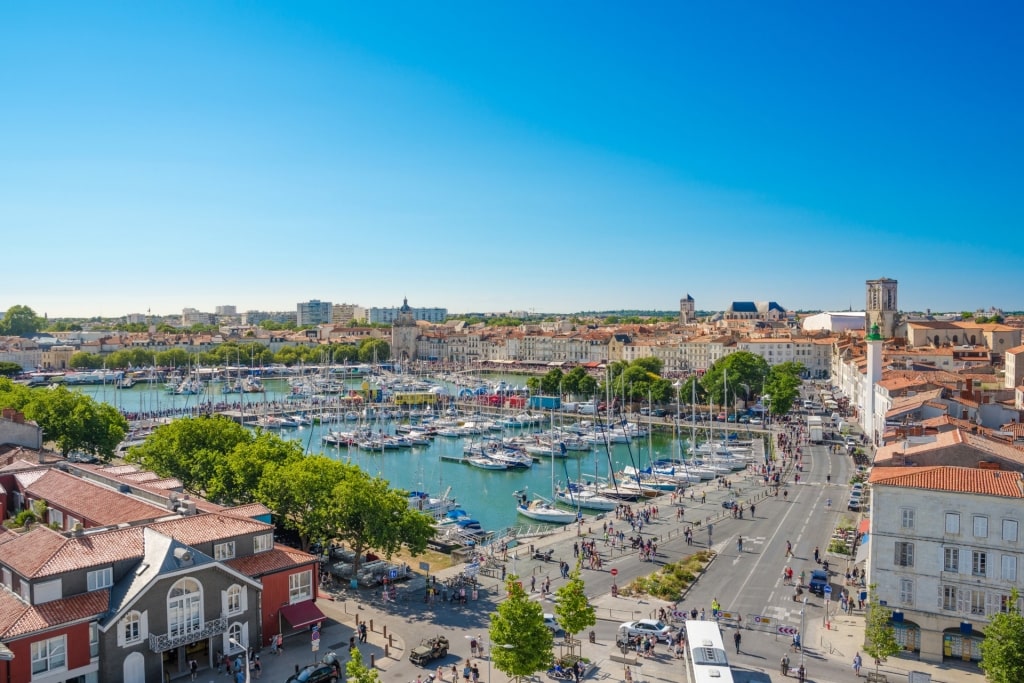
La Rochelle, Charente-Maritime
La Rochelle, near Bordeaux, is a delightful example of a French port city that has invested heavily in its fortifications over the years. The ramparts and towers of La Ville Blanche, or the White City (due to La Rochelle’s bright limestone buildings), have been guarding this port for centuries.
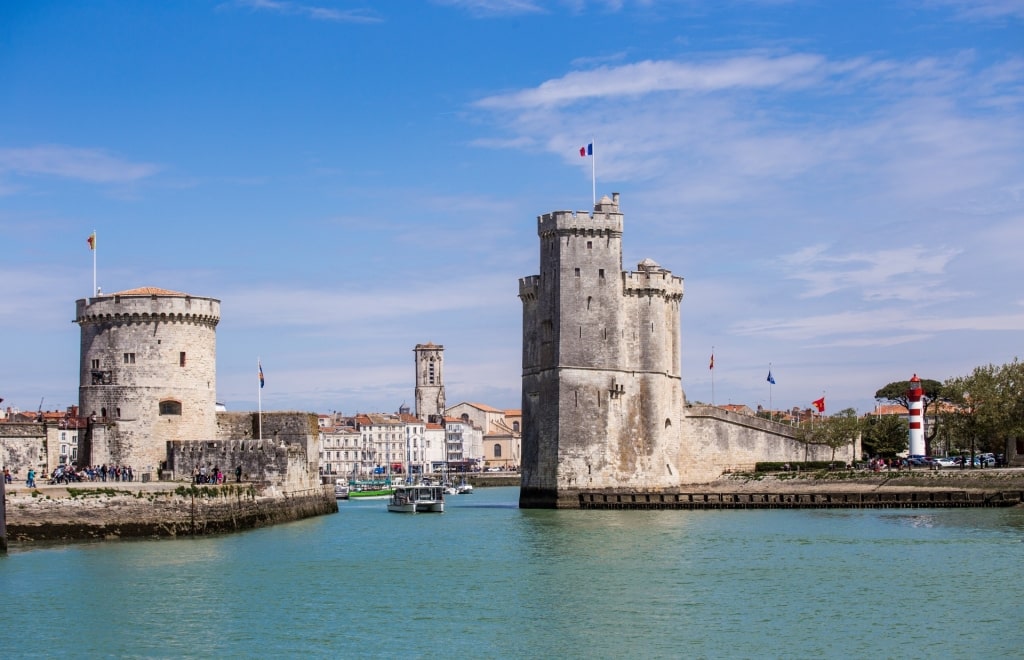
St. Nicolas Tower in La Rochelle, Charente-Maritime
Key points of interest include the city’s three main towers: St. Nicolas Tower, completed in the later 14th century, was built to protect the harbor entrance from adversaries trying to gain (uninvited) access to the anchorage.
The picturesque medieval Tour de la Lanterne, or the Lantern Tower, with its distinctive-looking spire, functioned as a lighthouse, and also served as a prison.
The stone Tour de la Chaîne, or Chain Tower, opposite Saint Nicolas Tower, provided La Rochelle with a massive defensive chain that was raised between the two strongholds to block ship access to the harbor come nightfall, and during times of conflict.
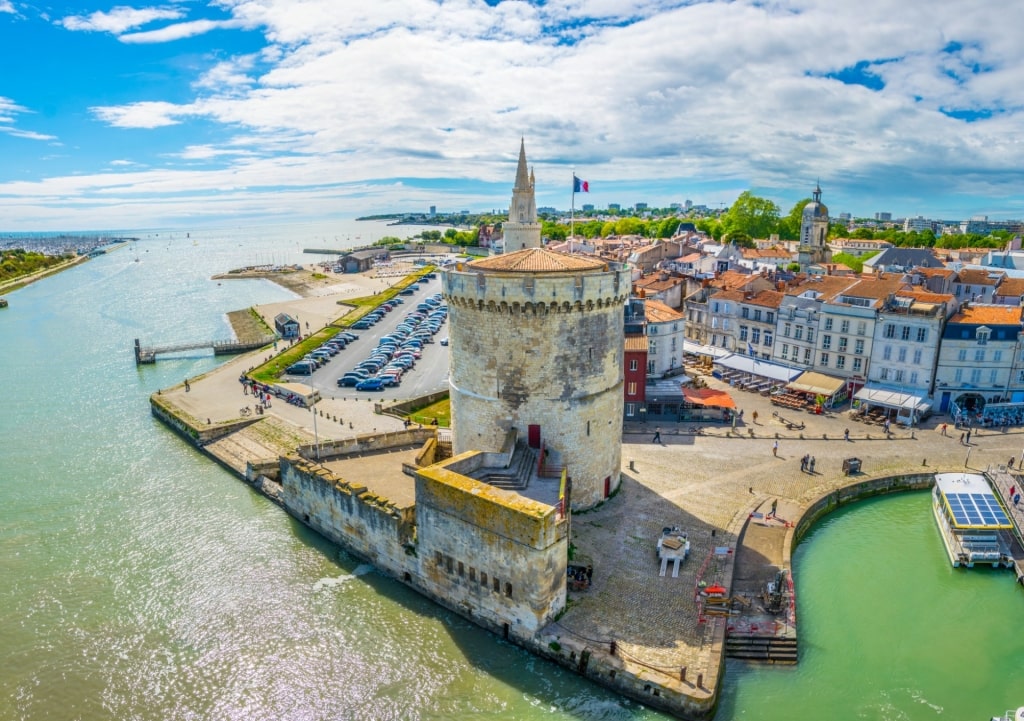
La Rochelle, Charente-Maritime
While strolling around La Rochelle, plan an excursion to the Vieux (Old) Port, which is the historical heart of the city.
Here, you’ll find small cobblestone lanes, and old arcade streets, which will offer you cover under their protective stone arches. The area’s pretty timber and stone buildings shouldn’t be missed either.
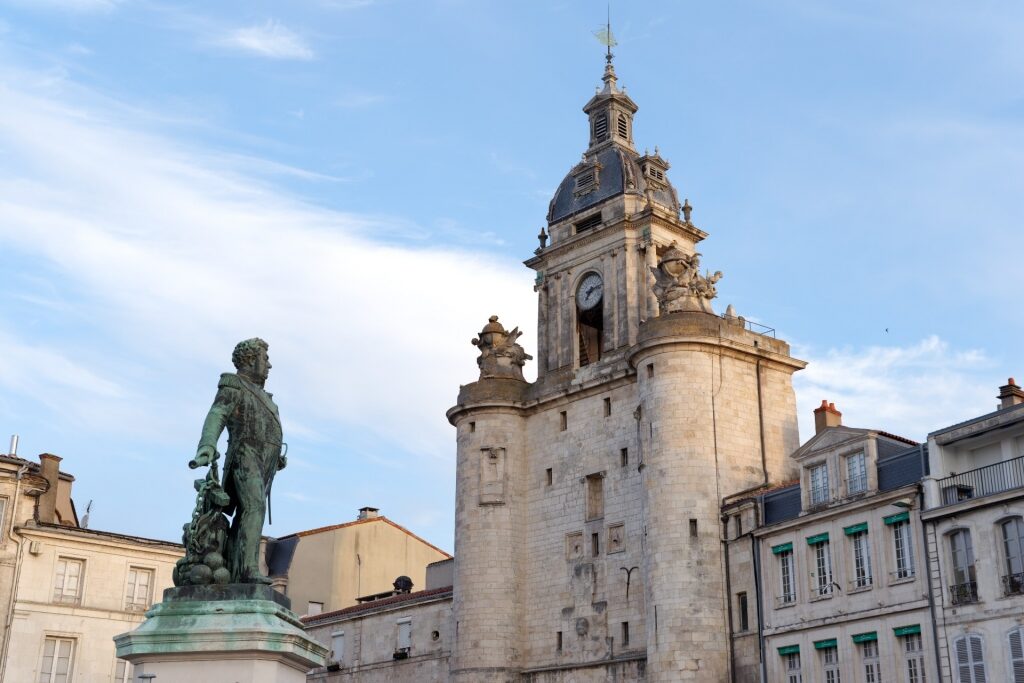
Great Clock in La Rochelle, Charente-Maritime
If your schedule allows, pass by the La Grosse Horloge, or the Great Clock. This gothic tower once served as a defensive position for the city.
During the early 15th century, after the port’s fortifications were beefed up, the tower was transformed into a clock; a large chronometer was installed inside the belfry to help residents keep track of the time of day.
Le Castellet, Provence
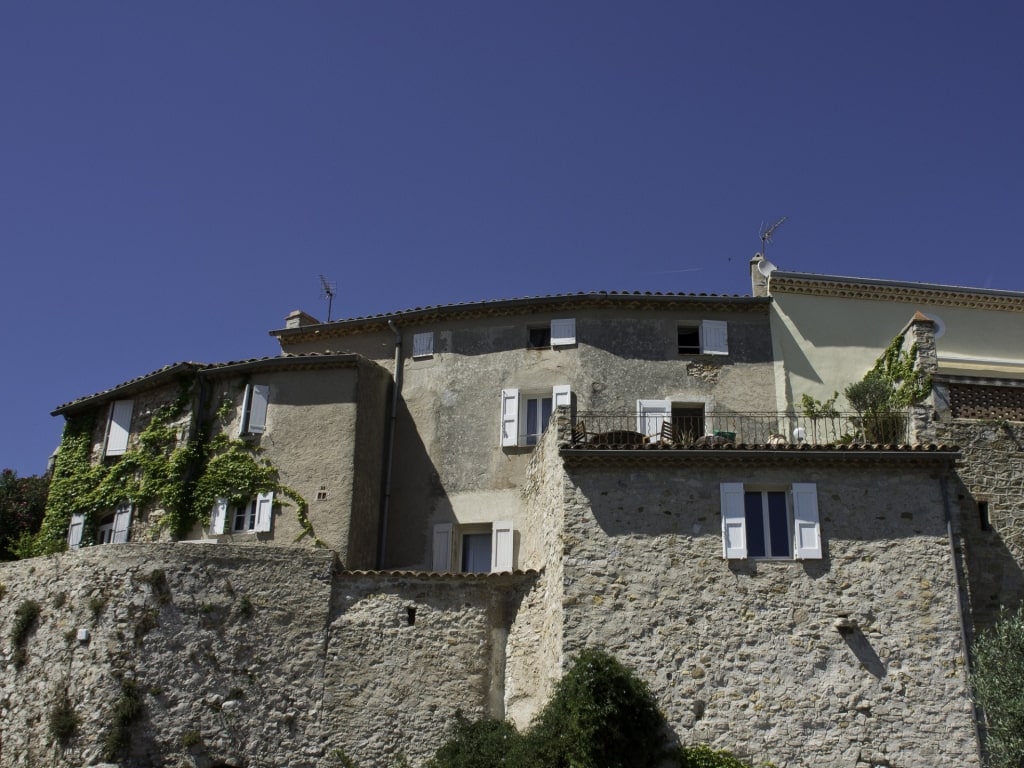
Le Castellet, Provence
Close to the port city of Toulon and the Mediterranean Sea, you’ll come across the feudal town of Le Castellet.
As far as walled cities in France go, Le Castellet’s snaking cobblestone lanes and snug hilltop locale—with wonderful vantages over the region’s countryside, including the limestone Sainte-Baume Massif and the local vineyards—make for a pleasant, history-filled outing.
You can gain access to Le Castellet’s old-world setting through one of the town’s two main gates; either through the restored Portalet Gate in the east or through Le Grand Portail, which opens up onto rue du Portail along the southern flanks of the village.
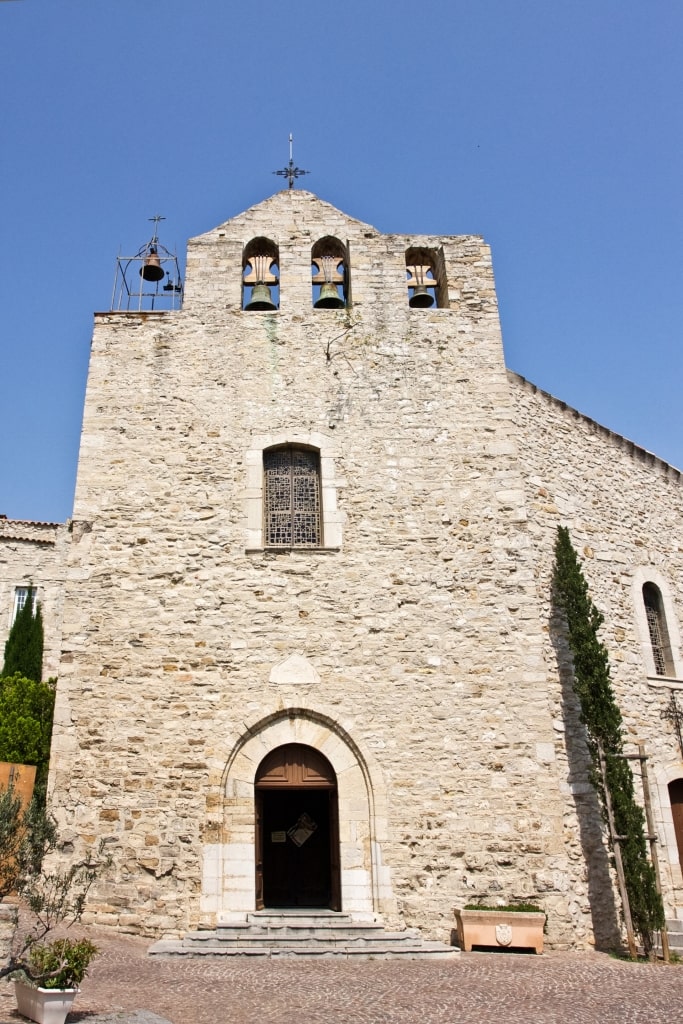
St. Sauveur Church in Le Castellet, Provence
As you walk through the village, you can visit different craft shops, various stone buildings, and houses, as well as St. Sauveur Church, which dates back to the 12th century. Stop by the old French castle, an official historical monument, which now doubles as the town hall.
Of note, especially if you’re a race fan, is the fact that the Le Castellet commune, in Provence’s Var Department, also happens to be home to the world-renowned Paul Ricard circuit, one of the longest Formula One tracks on the racing calendar.
If roaring F1 open-cockpit racing cars get your blood pumping, you can check out this circuit, located north of the village proper, time allowing.
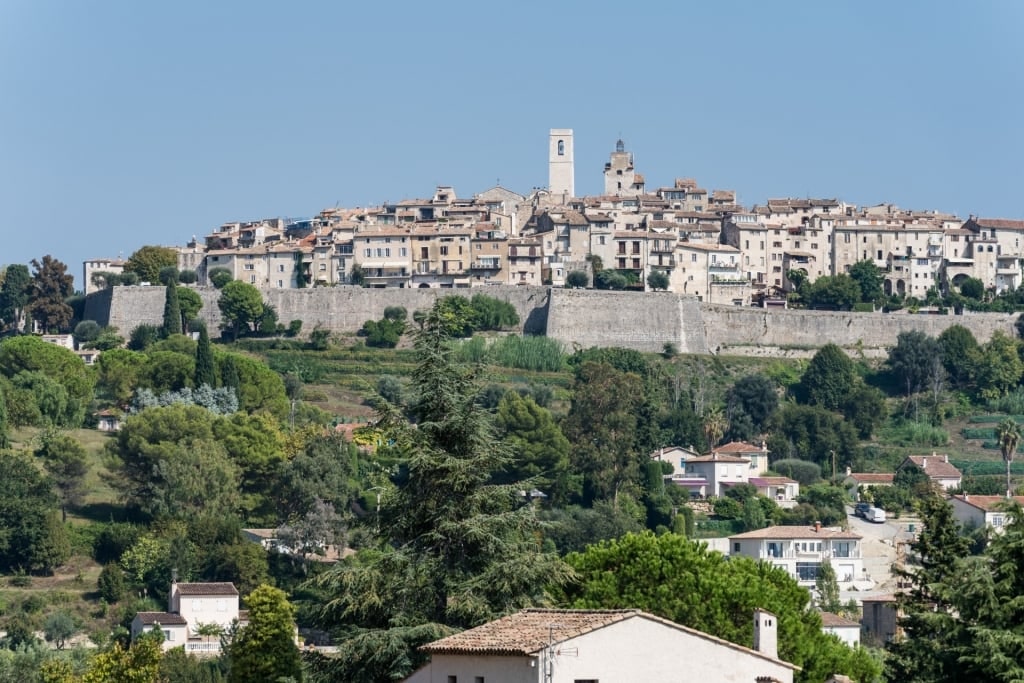
Saint-Paul-de-Vence, Alpes-Maritimes
Explore these fascinating walled cities and more on a cruise to France with Celebrity Cruises. Browse itineraries on our website and book your European vacation today.
